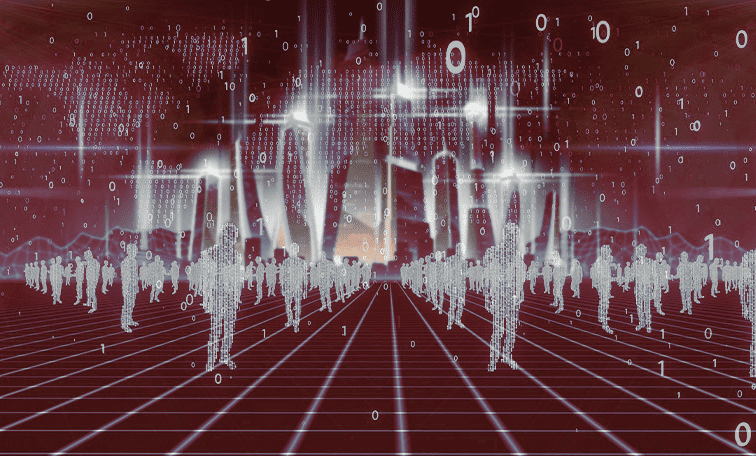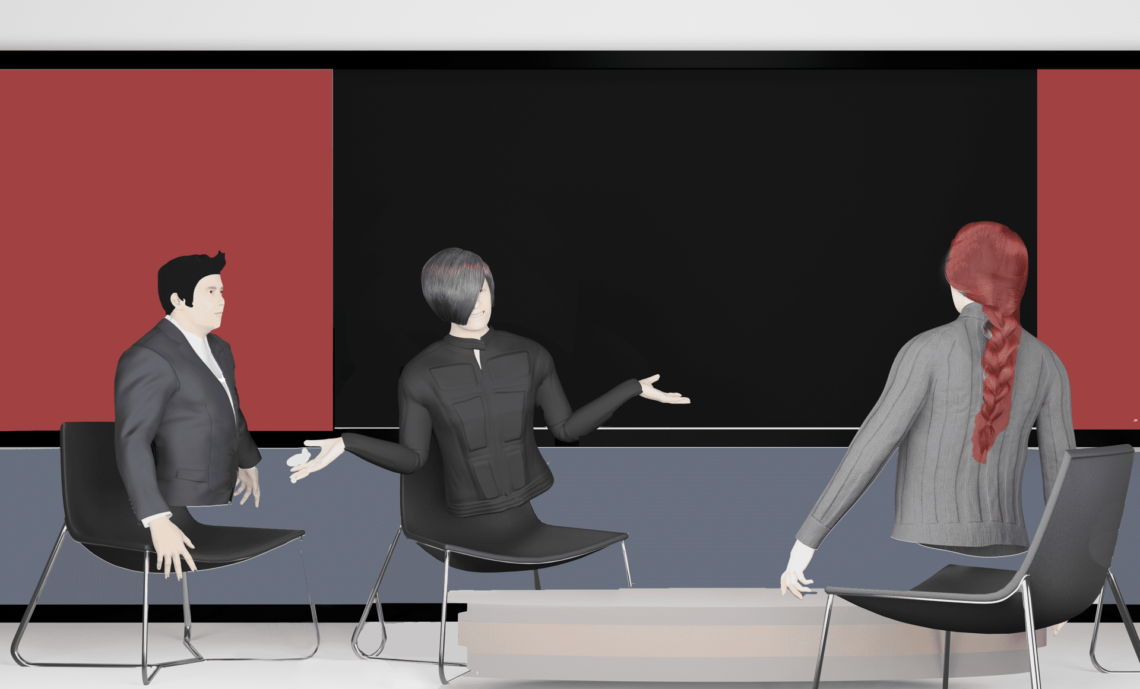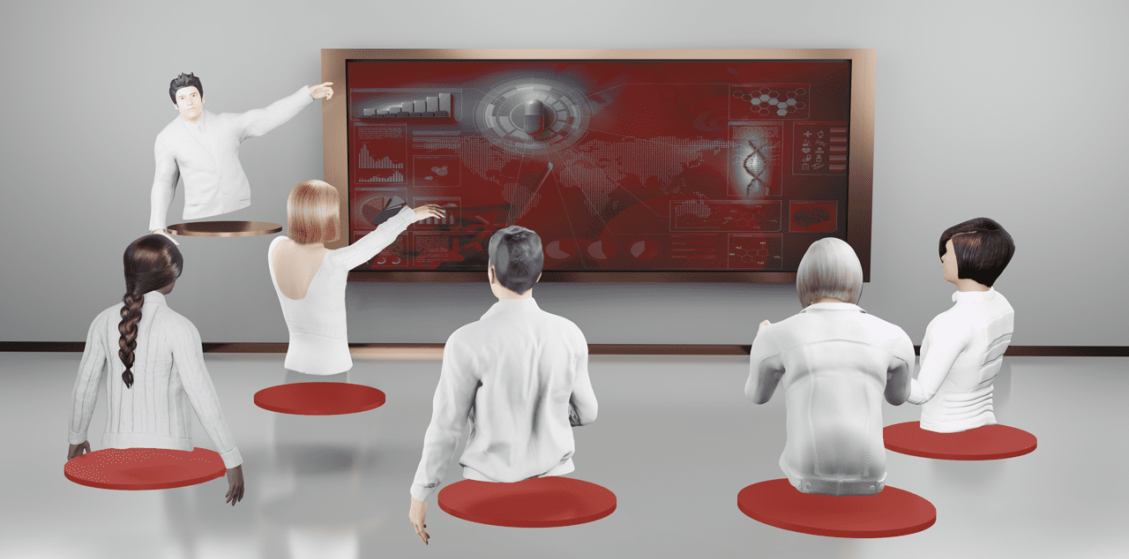

Imagine a world where you could have a beachside conversation with your colleagues, take meeting notes while floating around a space station, or teleport from your office in London to New York, all without stepping outside your front door. Feeling under pressure with too many meetings scheduled today? Then why not send your AI-enabled digital twin instead to take the load off your shoulders?
These examples offer but a glimpse into the future vision of work promised by “the metaverse,” a term originally coined by author Neal Stephenson in 1992 to describe a future world of virtual reality. While defying precise definition, the metaverse is generally regarded as a network of 3-D virtual worlds where people can interact, do business, and forge social connections through their virtual “avatars.” Think about it as a virtual reality version of today’s internet.
While still nascent in many respects, the metaverse has suddenly become big business, with technology titans and gaming giants such as Meta (previously Facebook), Microsoft, Epic Games, Roblox, and others creating their virtual worlds. The metaverse draws on a vast ensemble of different technologies, including virtual reality platforms, gaming, machine learning, blockchain, 3-D graphics, digital currencies, sensors, and (in some cases) VR-enabled headsets.

Interpretation of the Metaverse as imagined by Neal Stephenson
How do you get to the metaverse?
Many current workplace metaverse solutions require no more than a computer, mouse, and keyboard keys, but for the whole 3-D surround experience, you usually have to don a VR-enabled headset. However, rapid progress is also occurring in computer-generated holography that dispenses the need for headsets, either by using virtual viewing windows that create holographic displays from computer images, or by deploying specially designed holographic pods to project people and images into actual spaces).
Companies such as Meta are also pioneering haptic (touch) gloves that enable users to interact with 3-D virtual objects and experience sensations such as movement, texture, and pressure.
Within the metaverse, you can make friends, rear virtual pets, design virtual fashion items, buy virtual real estate, attend events, create and sell digital art — and earn money to boot.
But, until recently, the implications of the emerging metaverse for the world of work have received little attention.
That is now changing. Recent limitations on physical meetings and travel — are spurring a search by enterprises for more authentic, cohesive, and interactive remote and hybrid work experiences.
The metaverse seems set to reshape the world of work in at least four significant ways:
- New immersive forms of team collaboration
- The emergence of new digital, AI-enabled colleagues
- The acceleration of learning and skills acquisition through virtualization and gamified technologies
- The eventual rise of a metaverse economy with completely new enterprises and work roles
Like Being There: Teamwork and Collaboration in the Metaverse
The metaverse promises to bring new levels of social connection, mobility, and collaboration to a world of virtual work. However, keeping employees engaged has become a top challenge for many companies. It is harder to hold 20 people involved in the flat 2-D environment of a video call; some people don’t like appearing on camera, or maybe there is not a real-life scenario triggered by powerful storytelling. That is why companies are turning to metaverse-based platforms.
Organizations need to create immersive workplaces that enhance team cohesion, employee wellness, and collaboration, that is why many of the metaverse companies booming these days emphasize workplace solutions that help counter video meeting fatigue and the social disconnectedness of remote work. The ultimate vision is to be able to connect different virtual workplaces.
Remote work can be stressful. Research by Nuffield Health in the UK found that almost one-third of UK remote workers were experiencing difficulties separating home and work life, with more than one quarter finding it hard to switch off when the workday finishes. Virtual workplaces can provide a better demarcation between home and work life, creating the sensation of walking into the workplace each day - leaving and saying goodbye to colleagues when your work is done - and making it easier to stay connected to colleagues without feeling chained to the computer or cellphone, a frequent source of stress in traditional remote work situations.
Introducing Your Digital Colleague
Our work colleagues in the metaverse will not be limited to the avatars of our real-world colleagues. Increasingly, we will be joined by many digital colleagues — highly realistic, AI-powered, human-like bots. These AI agents will act as advisors and assistants, doing much of the heavy lifting of work in the metaverse and, in theory, freeing up human workers for more productive, value-added tasks.
Recent years have seen tremendous progress in conversational AI systems — algorithms that can understand text and voice conversations and converse in natural language. Such algorithms are now morphing into digital humans that can sense and interpret context, show emotions, make human-like gestures, and make decisions.
Emotions are the next frontier in the metaverse. Start-ups are bringing together advances in AI and autonomous animation to create lifelike, emotionally-responsive digital humans. Its digital humans are taking on roles as diverse as skincare consultants, covid health advisers, real-estate agents, and educational coaches for college applicants.
Digital human technology opens up a vast realm of possibilities for workers and organizations as they are highly scalable and can be deployed in multiple locations at once. Human workers will increasingly have the option to design and create their digital colleagues, personalized and tailored to work alongside them.

New Roles in the Metaverse Economy
The internet didn’t just bring new ways of working: it brought a whole new digital economy — new enterprises, new jobs, and new roles. So will the metaverse, as the immersive 3-D economy gathers momentum over the decade ahead.
Looking further ahead, just as we talk about digital-native companies today, we are likely to see the emergence of metaverse-native enterprises, companies entirely conceived and developed within the virtual, 3-D world. And just as the internet has brought new roles that barely existed 20 years ago — such as digital marketing managers, social media advisors, and cyber-security professionals — so, too, will the metaverse likely bring a vast swathe of new roles that we can only imagine today: avatar conversation designers, “holoporting” travel agents to ease mobility across different virtual worlds, metaverse digital wealth management and asset managers, etc.
Faster Learning in the Metaverse
The metaverse could revolutionize training and skills development, drastically compressing the time needed to develop and acquire new skills. AI-enabled digital coaches could be on-hand to assist in employee training and with career advice. In the metaverse, every object — a training manual, machine, or product, for example — could be made to be interactive, providing 3-D displays and step-by-step “how-to” guides.
Virtual reality role-play exercises and simulations will become common, enabling worker avatars to learn in highly realistic, “gameplay” scenarios, such as “the high-pressure sales presentation,” “the difficult client,” or “a challenging employee conversation.”
Research has established that virtual-world training can offer important advantages over traditional instructor or classroom-based training, as it provides greater scope for visually demonstrating concepts (e.g., an engineering design) and work practices, a greater opportunity for learning by doing, and overall higher engagement through immersion in games and problem-solving through “quest-based” methods.
Virtual-world learning can also use virtual agents, AI-powered bots to assist learners when they get stuck, provide nudges, and set scaled challenges. The visual and interactive nature of metaverse-based learning is also likely to appeal particularly to those who respond better to visual as opposed to verbal cues. People can also use virtual reality tools to combat social anxiety in work situations by creating realistic but safe spaces to practice public presentations and meeting interactions.

Challenges & Imperatives
Despite its vast future promise, the metaverse is still in its infancy in many respects. Significant obstacles could stymie its future progress: the computing infrastructure and power requirements for a full-fledged working metaverse are formidable. Today’s metaverse consists of different virtual worlds that are not unified in the way the original internet was. The metaverse also brings a thicket of regulatory and HR compliance issues, for example around potential risks of addiction, or unacceptable behaviors such as bullying or harassment in the virtual world, of which there has been some concern of late. While many issues remain, business leaders, policy makers, and HR leaders can start with the following imperatives for successful collaboration in the metaverse:
- Make portability of skills a priority: For workers, there will be concerns around portability of skills and qualifications: “Will experience or credentials gained in one virtual world or enterprise be relevant in another, or in my real-world life?” Employers, educators, and training institutions can create more liquid skills by agreeing upon properly certified standards for skills acquired in the metaverse, with appropriate accreditation of training providers. This will help to avoid quality dilution and provide the necessary assurance to metaverse-based workers and future employers.
- Be truly hybrid: As the rush to remote work during the pandemic showed, many enterprises had been laggards when it came to the adoption of truly digital ways of working, with outdated policies, lack of infrastructure, and a strict demarcation between consumer and business technologies. Enterprises must avoid these mistakes in the metaverse, creating integrated working models from the start that allow employees to move seamlessly between physical, online, and 3-D virtual working styles, using the consumer technologies native to the metaverse: avatars, gaming consoles, VR headsets, hand-track controllers with haptics and motion control that map the user’s position in the real world into the virtual world (although some versions use only cameras). Yet this is only the start. Some companies are developing virtual locomotion technologies such as leg attachments and treadmills to create realistic walking experiences. Nextmind uses ECG electrodes to decode neural signals so that users can control objects with their minds.
- Talk to your kids: The metaverse will force companies to completely reinvent how they think about training, with a focus on highly stimulative, immersive, challenge-based content. In designing their workplace metaverses, companies should look particularly to the younger generation, many of whom have grown up in a gaming, 3-D, socially-connected environment. Reverse intergenerational learning — where members of the younger generation coach and train their older colleagues — could greatly assist the spread of metaverse-based working among the overall workforce.
- Keep it open: The metaverse of today has largely emerged in an open, decentralized manner, spurred on by the efforts of millions of developers, gamers, and designers. To fully harness the power of this democratized movement for their workers, enterprises must not only guard against efforts to control or dominate the metaverse, but must actively seek to extend and open it up even further, for example by pursuing open-source standards and software where possible, and by pushing for “interoperability” — seamless connections — between different virtual worlds. Otherwise, as we have seen in the social media sphere, the metaverse could become quickly dominated by major technology companies, reducing choice and lessening the potential for grass-roots innovation.
The workplace of the 2020s already looks vastly different from what we could have imagined just a couple of years ago: the rise of remote and hybrid working has truly changed expectations around why, where and how people work. But the story of workplace transformation doesn’t end there. While still in its early stages, the emergent metaverse provides an opportunity for enterprises to reset the balance in hybrid and remote work, to recapture the spontaneity, interactivity, and fun of team-based working and learning while maintaining the flexibility, productivity, and convenience of working from home.
THREE ESSENTIAL
COMPONENTS
OF A SUCCESSFUL
METAVERSE STORY
speed of adoption
will be critical
With most of their infrastructure already in place, large enterprises will need to act fast to keep up with the new technologies and virtual services, or risk being outflanked in the market for talent by more nimble competitors.
ENGAGEMENT,
NOT MONITORING
The metaverse will only be successful if deployed as a common tool for employee engagement and enriching interactive experiences, not for supervision and control.
IT HAS TO RING A BELL
The major part of the work done in the metaverse needs to match the virtual experiences that workers, particularly the younger ones, have come to expect of the technology already available in their lives.
Guided by these principles, business leaders can start to imagine and create their own workplaces of the future.

Having an expert, knowledgable and experienced partner can be instrumental when learning how to navigate the often complex and regulated landscape of Pharma communications. Six Degrees Medical can help identify where valuable audience engagement occurs and craft a program and content strategies that speak to your goals, whether short or long term.
Inspiration/Source/References

